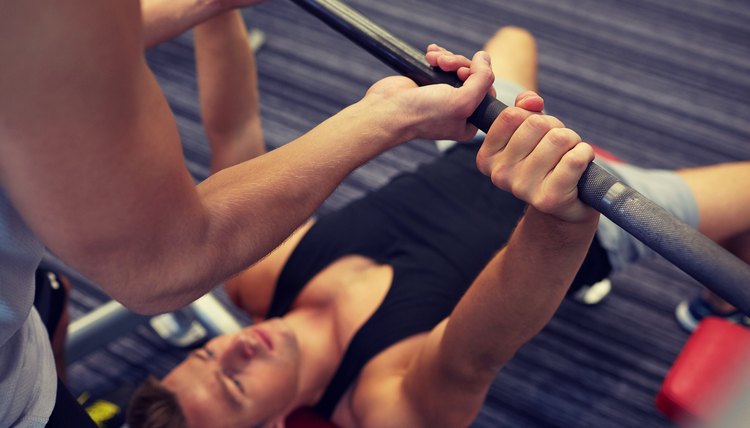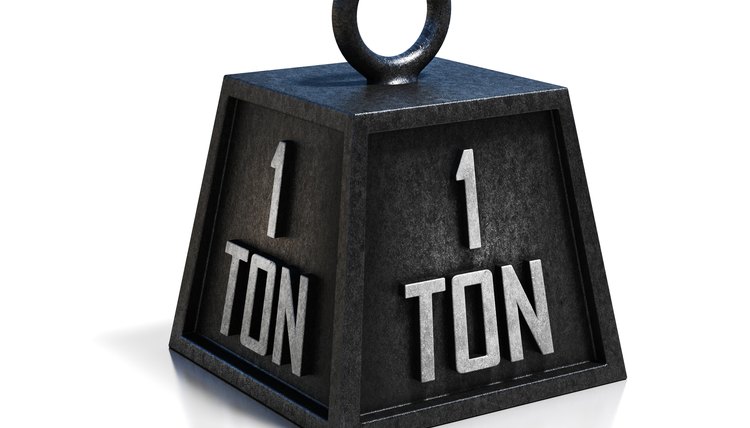What does fact checked mean?
At SportsRec, we strive to deliver objective content that is accurate and up-to-date. Our team periodically reviews articles in order to ensure content quality. The sources cited below consist of evidence from peer-reviewed journals, prominent medical organizations, academic associations, and government data.
The information contained on this site is for informational purposes only, and should not be used as a substitute for the advice of a professional health care provider. Please check with the appropriate physician regarding health questions and concerns. Although we strive to deliver accurate and up-to-date information, no guarantee to that effect is made.
How to Increase an Incline Bench Press (with Video)

While the normal flat bench press focuses on the sternal pectoralis major, or the lower pec muscle group, the incline bench press works primarily the clavicular pectoralis major, or the upper pecs. Many weightlifters reach a plateau in certain exercises and cannot seem to lift additional weight.
However, by strengthening antagonist muscles, using proper form, eating a proper diet and using some other techniques, you can get out of that plateau and increase the amount of weight that you lift with this bench press variation.
Strengthen your back.

dolgachov/iStock/Getty Images
Back muscles, which are the antagonist muscles in the bench press, help support your lifts. Perform the barbell shrug, barbell pullover, overhead press and bent over row to increase your back strength. You should also look to increase muscle strength in the shoulder blades, anterior deltoids, and triceps as they also contribute to the range of motion of the incline bench.
Reduce the number of repetitions.

dolgachov/iStock/Getty Images
If you can perform 12 to 15 repetitions with the weight that you currently lift, increase the amount of weight by five to 10 pounds and decrease your rep range to 2 to 5 reps. This will increase your strength rather than your endurance. By lifting heavy weights instead of lighter weights, you can increase hypertrophy in your muscles which leads to muscle growth.
Take a week off.
Even people in bodybuilding take days off, and you should too. By trying to increase your strength, you may have exhausted your upper chest. Let your chest muscles relax from the incline bench press for one week and perform push ups in their place. Beginners should especially utilize a rest program during a strength training routine as their pectoral muscles, along with other muscles, are weaker.
Eat a healthy diet.

dolgachov/iStock/Getty Images
Focus on eating plenty of lean protein, such as grilled fish, chicken and eggs, to encourage muscle growth in your upper body. Consider taking the advice of a personal trainer or physician to find a diet that is best for you.
Lift using the proper form.
For the incline barbell bench press exercise, set the bench to a 30- or 45-degree angle. Put your feet flat on the floor. Place your hands on the barbell so your grip width is wider than shoulder-width apart, and keep your palms toward the ceiling in a close grip. Unrack the barbell and lower it to the top of your chest in a pressing movement. Do not lock your elbows, also known as lockout, during the bar path. Lift the bar twice as fast as you lower it. Incline dumbbell bench press has the same form.
Perform other exercises that strengthen the upper chest muscles.
While looking to increase your incline bench press, perform other chest exercises. One good exercise for muscle activation is the decline pushup. Get into a pushup starting position with the tops of your feet on top of an adjustable bench. Place your hands slightly wider than shoulder-width apart. Straighten your arms. Bend your elbows and lower yourself to the floor. Straighten your arms and lift yourself back up. Repeat 15 times. Also try other chest workouts like the dumbbell incline fly and the pike pushup.
Warm up before doing the incline bench press by walking or jogging for 10 minutes, and perform dynamic stretches.
Cool down after the incline bench press by walking or jogging for 10 minutes, and perform static stretches.
Talk to your doctor before starting a new training program or exercise routine. If you choose to take supplements to build muscle, only take FDA approved ones or ones approved by your physician.
Writer Bio
Though constantly traveling the world, Julia Williams is based in Chicago and has been writing since 2006. Williams holds a Bachelor of Science in accounting. She is also a licensed fitness instructor, specializing in Pilates since 2003 and has written hundreds of articles on exercise and health.
